Who we are?
Research Group Leader
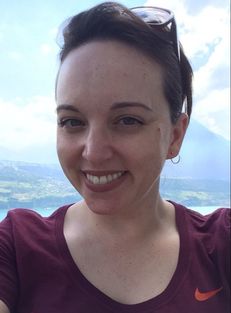
Dr. Margaret J. Couvillon
Assistant Professor, Pollinator Biology & Ecology
I am a broadly trained bee researcher with a particular interest in the foraging and recruitment behaviors of the honey bee. I earned my undergraduate degree from Loyola University in New Orleans (B.S. in Biology, minor in Chemistry) and then spent a year as an AmeriCorps *NCCC volunteer. I completed a M.S. in Neurobiology at Duke University before moving overseas for my Ph.D. with Professor Francis Ratnieks at the University of Sheffield, where I investigated mechanisms of nestmate recognition in honey bees and stingless bees. As a postdoctoral researcher with Professor Anna Dornhaus at the University of Arizona, I investigated proximate and ultimate explanations for worker size variation in the bumble bee Bombus impatiens. For a second postdoc, I rejoined the lab of Francis Ratnieks, now at the University of Sussex in Brighton, England. There I worked to develop the honey bee, in particular its waggle dance communication, as a bioindicator for the "health" of the British landscape.
I started as an Assistant Professor at Virginia Tech in 2017.
Contact: Email me | Google Scholar Profile | Download Current Biosketch| The BeeGroup @ VT Facebook Page
Assistant Professor, Pollinator Biology & Ecology
I am a broadly trained bee researcher with a particular interest in the foraging and recruitment behaviors of the honey bee. I earned my undergraduate degree from Loyola University in New Orleans (B.S. in Biology, minor in Chemistry) and then spent a year as an AmeriCorps *NCCC volunteer. I completed a M.S. in Neurobiology at Duke University before moving overseas for my Ph.D. with Professor Francis Ratnieks at the University of Sheffield, where I investigated mechanisms of nestmate recognition in honey bees and stingless bees. As a postdoctoral researcher with Professor Anna Dornhaus at the University of Arizona, I investigated proximate and ultimate explanations for worker size variation in the bumble bee Bombus impatiens. For a second postdoc, I rejoined the lab of Francis Ratnieks, now at the University of Sussex in Brighton, England. There I worked to develop the honey bee, in particular its waggle dance communication, as a bioindicator for the "health" of the British landscape.
I started as an Assistant Professor at Virginia Tech in 2017.
Contact: Email me | Google Scholar Profile | Download Current Biosketch| The BeeGroup @ VT Facebook Page
Graduate students
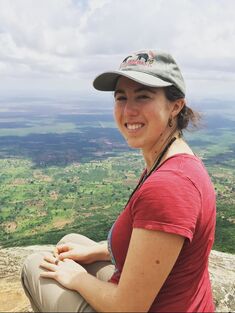
Laura McHenry
Laura is interested in the intersection of animal behavior, wildlife ecology, and conservation. She earned her B.A. in Biology from Kenyon College and also spent time studying the socioecology of Barbary Macaques (Macaca sylvanus) living alongside humans in Morocco and the relationship between wildlife conservation and public health in Kenya and Tanzania.
For her Ph.D. at Virginia tech, Laura is studying honey bee communication in the context of foraging and recruitment. When a forager honey bee finds a profitable resource out on the landscape – like a good source of pollen or nectar – she may perform a waggle dance back at the hive to “tell” her nestmates where to get the good stuff. Then, bees who observed her dance may set out to follow their sister's instructions to find and forage that same floral resource. Fascinatingly, however, while some bees succeed, others never make it. Why does recruitment sometimes fail? Laura will use the waggle dance alongside feeder-training experiments to better understand honey bee communication both when it succeeds, and when it appears to break down.
Laura is interested in the intersection of animal behavior, wildlife ecology, and conservation. She earned her B.A. in Biology from Kenyon College and also spent time studying the socioecology of Barbary Macaques (Macaca sylvanus) living alongside humans in Morocco and the relationship between wildlife conservation and public health in Kenya and Tanzania.
For her Ph.D. at Virginia tech, Laura is studying honey bee communication in the context of foraging and recruitment. When a forager honey bee finds a profitable resource out on the landscape – like a good source of pollen or nectar – she may perform a waggle dance back at the hive to “tell” her nestmates where to get the good stuff. Then, bees who observed her dance may set out to follow their sister's instructions to find and forage that same floral resource. Fascinatingly, however, while some bees succeed, others never make it. Why does recruitment sometimes fail? Laura will use the waggle dance alongside feeder-training experiments to better understand honey bee communication both when it succeeds, and when it appears to break down.
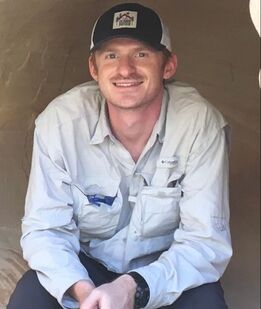
Ian McKellips
Ian is interested in cultural control strategies that preserve honey bee health, maximize pollination, and support long-term hive sustainability. He received his B.A. in Biology from Christopher Newport University and also possesses expertise as a Master Gardener and an Apprentice Beekeeper from Washington State. Ian also served for nine years in the Navy, working in aviation cargo instruction and logistics management. He continues his service in the Navy Reserves.
For his Ph.D., Ian will investigate the effect of a native wildflower plot on the foraging, habitat, and refuge of honey bees, non-Apis bees, and beneficial parasitoids in a fruit crop environment. For example, we previously demonstrated that honey bees increase their use of apple orchards after the apple trees have completed their blooming, collecting nectar and pollen from the abundant wildflowers growing between the orchard rows and under the apple trees (Steele et al. 2022). However, this post-bloom forage also increases their exposure to pesticides (Couvillon, Steele et al. In Prep). Ian will experimentally determine if a newly planted wildflower meadow, as an alternative forage, will decrease honey bee post-bloom pesticide exposure when the hives are located in orchards. Ian's research is supported by the VA Post 9/11 GI Bill and a Southern SARE Student Research Fellowship.
Ian is interested in cultural control strategies that preserve honey bee health, maximize pollination, and support long-term hive sustainability. He received his B.A. in Biology from Christopher Newport University and also possesses expertise as a Master Gardener and an Apprentice Beekeeper from Washington State. Ian also served for nine years in the Navy, working in aviation cargo instruction and logistics management. He continues his service in the Navy Reserves.
For his Ph.D., Ian will investigate the effect of a native wildflower plot on the foraging, habitat, and refuge of honey bees, non-Apis bees, and beneficial parasitoids in a fruit crop environment. For example, we previously demonstrated that honey bees increase their use of apple orchards after the apple trees have completed their blooming, collecting nectar and pollen from the abundant wildflowers growing between the orchard rows and under the apple trees (Steele et al. 2022). However, this post-bloom forage also increases their exposure to pesticides (Couvillon, Steele et al. In Prep). Ian will experimentally determine if a newly planted wildflower meadow, as an alternative forage, will decrease honey bee post-bloom pesticide exposure when the hives are located in orchards. Ian's research is supported by the VA Post 9/11 GI Bill and a Southern SARE Student Research Fellowship.
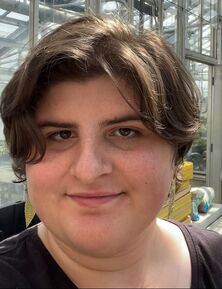
Lindsay Johnson
Lindsay is interested in honey bee health and well being, with a particular focus on foraging and recruitment. She received her B.S. from Virginia Tech in 2023 with a major in Biology and a minor in Entomology.
For her M.S., Lindsay will investigate ways we can determine honey bee forage distance. In particular, she will calibrate and validate honey bee flight duration as a proxy for distance, including comparing its estimates against the distance estimates obtained from a dancing bee, which is the gold standard for determining flight distance. Lindsay's research is supported by an OREI NIFA grant, awarded to collaborators PI Dr. López-Uribe and Underwood at Penn State Univeristy. Dr. Couvillon is a co-PI on that grant.
Lindsay is interested in honey bee health and well being, with a particular focus on foraging and recruitment. She received her B.S. from Virginia Tech in 2023 with a major in Biology and a minor in Entomology.
For her M.S., Lindsay will investigate ways we can determine honey bee forage distance. In particular, she will calibrate and validate honey bee flight duration as a proxy for distance, including comparing its estimates against the distance estimates obtained from a dancing bee, which is the gold standard for determining flight distance. Lindsay's research is supported by an OREI NIFA grant, awarded to collaborators PI Dr. López-Uribe and Underwood at Penn State Univeristy. Dr. Couvillon is a co-PI on that grant.
Undergraduate student
Lab alumni
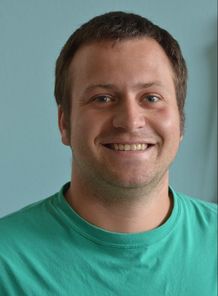
Dr. Bradley Ohlinger, Ph.D. 2023
For his Ph.D., Brad investigated honey bee foraging across different landscapes in Virginia. In particular, he used the honey bee waggle dance to understand the spatial and temporal availability of food for honey bees in representative areas (Ohlinger et al. 2022a, Ohlinger et al 2022b, Ohlinger et al. 2023, Ohlinger et al In Prep). Brad was co-advised by Dr. Maggie Couvillon and Dr. Roger Schürch, and his research was supported by The Foundation for Food and Agriculture Research (FFAR).
Dr. Ohlinger is currently a postdoctoral research fellow with Dr. Taka Sasaki in the Odom School of Ecology at the University of Georgia.
For his Ph.D., Brad investigated honey bee foraging across different landscapes in Virginia. In particular, he used the honey bee waggle dance to understand the spatial and temporal availability of food for honey bees in representative areas (Ohlinger et al. 2022a, Ohlinger et al 2022b, Ohlinger et al. 2023, Ohlinger et al In Prep). Brad was co-advised by Dr. Maggie Couvillon and Dr. Roger Schürch, and his research was supported by The Foundation for Food and Agriculture Research (FFAR).
Dr. Ohlinger is currently a postdoctoral research fellow with Dr. Taka Sasaki in the Odom School of Ecology at the University of Georgia.
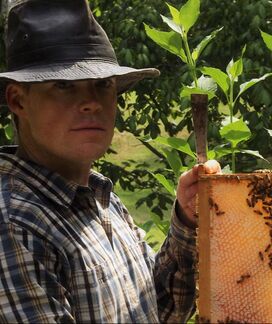
Chad Campbell, M.S. 2023
For his M.S., Chad investigated if honey bee foraging preferences, as communicated by the waggle dance, are predictive of the success and productivity of another managed, introduced pollinator, the Alfalfa Leafcutting Bee (Campbell et al. In Prep). Chad's research was supported by The Foundation for Food and Agriculture Research (FFAR).
For his M.S., Chad investigated if honey bee foraging preferences, as communicated by the waggle dance, are predictive of the success and productivity of another managed, introduced pollinator, the Alfalfa Leafcutting Bee (Campbell et al. In Prep). Chad's research was supported by The Foundation for Food and Agriculture Research (FFAR).
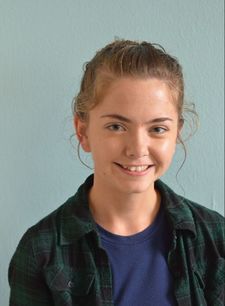
Mary Silliman, M.S. 2021
For her M.S., Mary investigating honey bee foraging in row crop systems (Silliman et al. 2022). Mary was co-advised by Dr. Maggie Couvillon and Dr. Sally Taylor, and her research was supported by The Foundation for Food and Agriculture Research (FFAR).
For her M.S., Mary investigating honey bee foraging in row crop systems (Silliman et al. 2022). Mary was co-advised by Dr. Maggie Couvillon and Dr. Sally Taylor, and her research was supported by The Foundation for Food and Agriculture Research (FFAR).
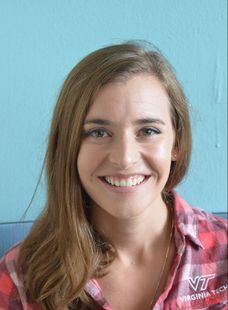
Taylor Steele, M.S. 2021
For her M.S., Taylor investigated honey bee foraging in a fruit crop environment (Steele et al. 2022).
For her M.S., Taylor investigated honey bee foraging in a fruit crop environment (Steele et al. 2022).
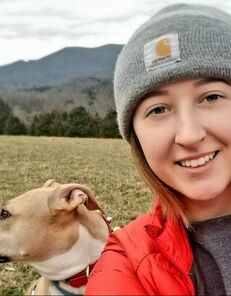
Micki Palmersheim, M.S. 2021
For her M.S., Micki compared the abundance and diversity of insect pollinator visitors to 25 common garden plants (Palmersheim et al 2022).
For her M.S., Micki compared the abundance and diversity of insect pollinator visitors to 25 common garden plants (Palmersheim et al 2022).
Junior researchers

Nate and Rosie
Our children are investigating the effects of periodic sleep disturbance on the well-being of their parents.
Our children are investigating the effects of periodic sleep disturbance on the well-being of their parents.
